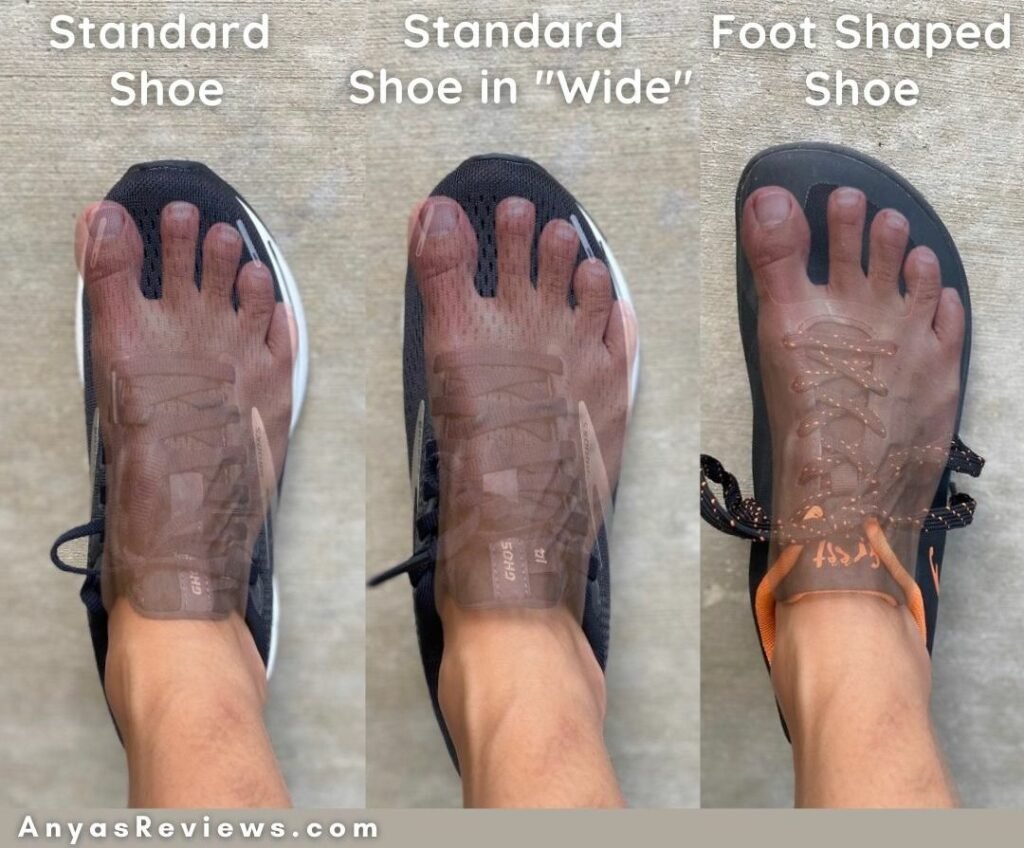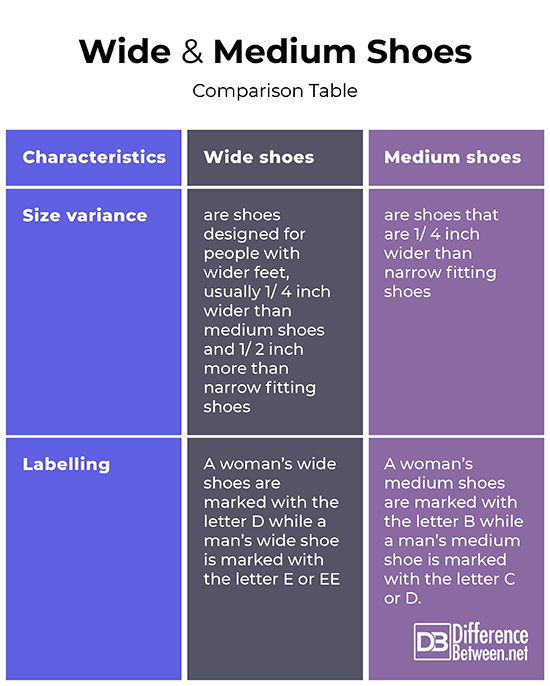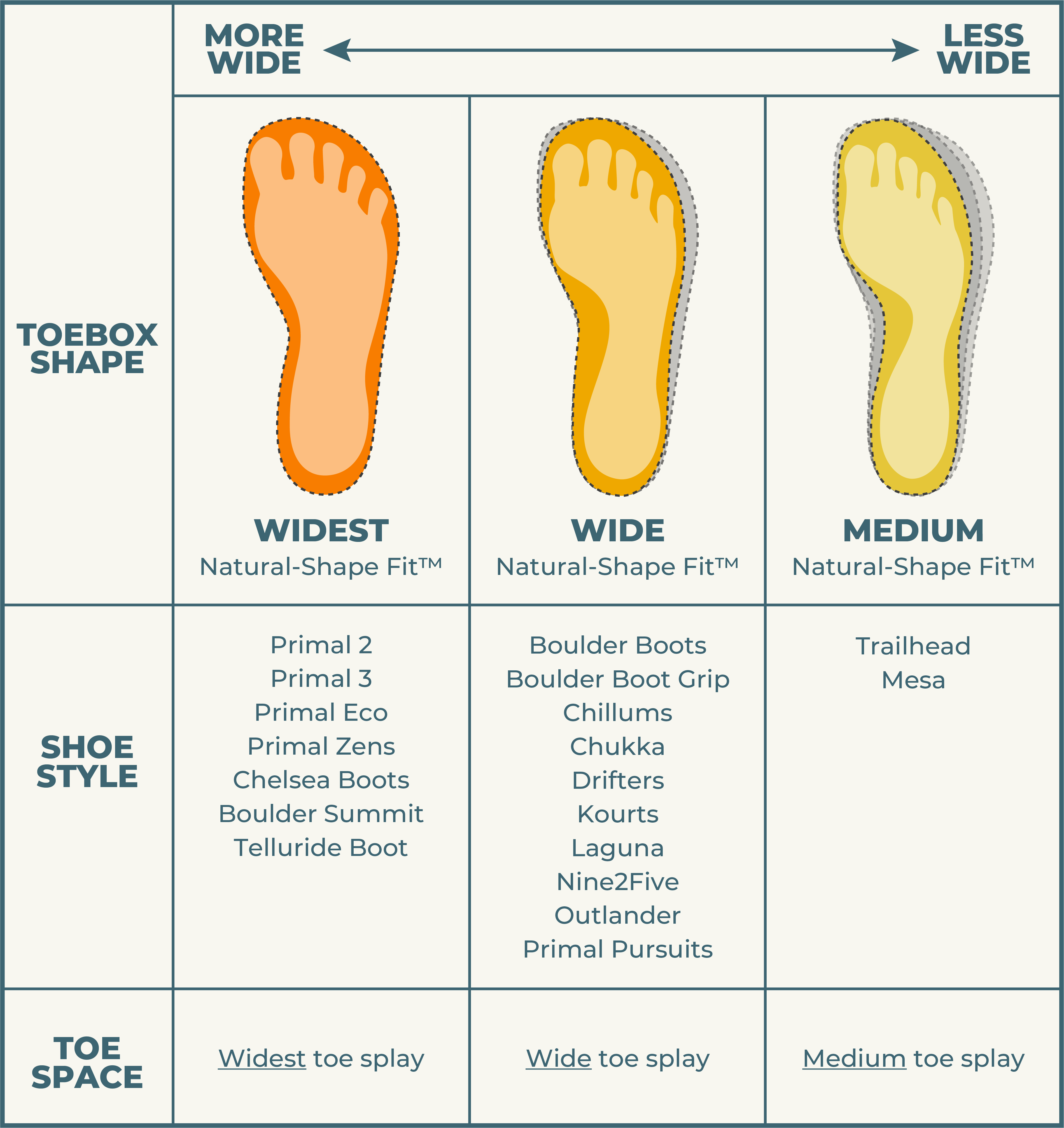When it comes to footwear, comfort is key. But what does that comfort mean for each of us? For some people, the difference could be as simple as the width of the shoes they wear. If you’re wondering about the difference between medium and wide shoes, you’re not alone! Many shoe enthusiasts, professionals, and everyday wearers are trying to find that perfect fit. In this comprehensive guide, we’ll explore the nuances between medium and wide shoes, share real-world footwear experiences, compare styles, and provide tips to help you choose the right pair.
Understanding Shoe Widths
What Are Medium Shoes?
Medium shoes typically refer to a standard width fitting. In the U.S., this is often denoted as “D” for men and “B” for women. This width is designed for the average foot shape and size—meaning it offers enough room for comfort without being excessively loose. Many popular brands design their footwear with this standard width in mind.
Example of Medium Shoes
Consider a pair of Nike Air Max sneakers. The design is tailored for the medium width, providing enough space for the average foot while maintaining the sleek aesthetic that Nike is known for. Many users report that these shoes fit snugly but comfortably during various activities, from running to casual outings.
What Are Wide Shoes?
On the other hand, wide shoes cater to individuals who have a broader foot. In shoe sizing, wide is generally represented by “E” for men and “D” or “W” for women, depending on the brand. Wide shoes are engineered to offer additional room in the toe box, midfoot, and heel area, ensuring comfort and reducing the risk of pinching and blisters.

Real-World Experience with Wide Shoes
Take, for instance, New Balance’s 990 series, known for its wide-fitting options. Users with wider feet often share their relief at finally finding shoes that accommodate their foot size without causing discomfort—especially during long periods of wear. This real-world feedback emphasizes the importance of selecting the right width for optimal comfort.
Why Width Matters in Shoes

The Impact on Comfort and Health
The width of your shoe can significantly affect not just how they feel, but also your foot health. Wearing shoes that are too narrow can result in a multitude of issues, including bunions, corns, and other forms of foot discomfort. In contrast, shoes that are too wide might lead to instability and lack of support, which can also cause discomfort.
Daily Footwear Experiences
Many wearers in search of comfort recount their struggles with ill-fitting shoes. For example, a working professional who spends hours on their feet found that the medium shoes they had been wearing led to sore feet by the end of the day. After switching to a wide-fitting shoe, they noticed a dramatic decrease in foot fatigue, showcasing that the correct width can boost productivity and overall well-being.

How to Measure Your Foot Width
Simple Steps for Accurate Measurement
Measuring your foot width can seem daunting, but it’s quite simple. Here’s how you can do it at home:

- Find a blank piece of paper and a pen.
- Stand on the paper with your heel against a wall.
- Mark the widest part of your foot on the paper.
- Measure the distance between the two widest points of your foot.
- Use a shoe size chart to find your corresponding width size based on your measurement.
Shoe Size Chart
| Men’s Size | Women’s Size | Foot Width (inches) |
|---|---|---|
| 8D | 9.5B | 3.4-3.6 |
| 10D | 11B | 3.8-4.0 |
| 12D | 13B | 4.1-4.3 |
| 8E | 9.5D | 3.8-4.0 |
| 10E | 11D | 4.1-4.3 |
| 12E | 13D | 4.4-4.6 |

Pros and Cons of Medium vs. Wide Shoes
Pros of Medium Shoes
- Standard fit for average foot size.
- Widely available, making it easier to find styles.
- Often lighter and more streamlined than wider options.

Cons of Medium Shoes
- Can cause discomfort for wider footed individuals.
- May lead to foot problems if not properly fitted.
Pros of Wide Shoes
- Offers ample space for broader feet, enhancing comfort.
- Reduces the risk of blisters and other foot issues.
- Can accommodate orthotics and other supportive foot gear.

Cons of Wide Shoes
- Less commonly available depending on the brand.
- Can result in a bulky appearance.
- May require special ordering, leading to longer wait times.
Choosing the Right Shoe Width for You

Identify Your Foot Type
Understanding your foot type is the first step toward selecting the right shoe width. Take note of how your shoes fit you currently, and be mindful of any discomfort you experience. If you often feel tightness or pinching, you may need a wider shoe. Conversely, if your shoes feel loose and unstable, consider going down in width.
Trying on Shoes: The Final Test
The best way to determine the correct width for your foot is to try on different styles of shoes in-store. Here are a few tips:
- Wear the socks you would normally wear with the shoes.
- Walk around the store to get a feel for the fit.
- Check for space in the toe box; you should be able to wiggle your toes comfortably.
- Ensure there’s no pinching or slipping in the heel area.
Popular Brands Offering Medium and Wide Widths
Brands to Consider
Many brands now offer both medium and wide options to cater to diverse foot types. Here are a few that stand out:
- New Balance: Known for their extensive range of widths, they provide great options for both medium and wide shoes.
- Nike: Offers a variety of shoes including medium-width shoes with a focus on performance and style.
- Brooks: Perfect for runners, Brooks shoes are available in different widths ensuring that every runner can find their fit.
- ASICS: Producing both athletic shoes and casual wear, ASICS is another excellent choice for those needing wider options.
FAQs About Medium and Wide Shoes
1. Can I wear a wide shoe if I have medium-width feet?
Yes, it’s possible to wear wide shoes if you have medium-width feet, especially if you prefer more toe room. However, ensure that the extra width doesn’t compromise overall support.
2. Do shoe sizes differ by brand?
Yes, shoe sizes can vary significantly by brand. It’s essential to try on shoes or refer to the specific brand’s size guide before purchasing.
3. How do I know if I need a wide shoe?
If you often experience pinching or discomfort in the toe box, or if your feet feel cramped in medium shoes, it’s likely that you would benefit from wide shoes.
4. What are the health benefits of wearing the right shoe width?
Wearing the correct shoe width can prevent a variety of foot-related issues including blisters, corns, and conditions like plantar fasciitis by providing proper support and reducing unnecessary friction.
5. Can I use orthotic inserts in wide shoes?
Yes, wide shoes typically provide enough space for orthotic inserts, allowing for enhanced comfort and support.
6. What should I look for in the toe box of shoes?
The toe box should allow you to wiggle your toes easily. If you feel any pressure or restriction, it may be too narrow.
7. How can I stretch my medium shoes if they feel tight?
You can stretch medium shoes by wearing them with thick socks, using a shoe stretcher, or taking them to a professional cobbler to have them adjusted.
8. What materials are best for wide shoes?
Leather and mesh are typically the best materials for wide shoes as they are flexible and can comfortably accommodate broader feet without causing discomfort.
9. Are there brands specifically for wide shoes?
Yes, brands like New Balance and Brooks specialize in producing shoes specifically designed with wider widths in mind.
Conclusion: Step into Comfort
Understanding the difference between medium and wide shoes is essential for achieving optimum comfort and foot health. Whether you’re a professional on your feet all day, a fashion enthusiast, or a workout warrior, the right shoe width is crucial in preventing discomfort and promoting healthy foot function.
If you haven’t already, take the time to assess your own foot width, try on different styles, and choose wisely based on your unique needs. With the right fit, you can step confidently into your daily adventures without a second thought!